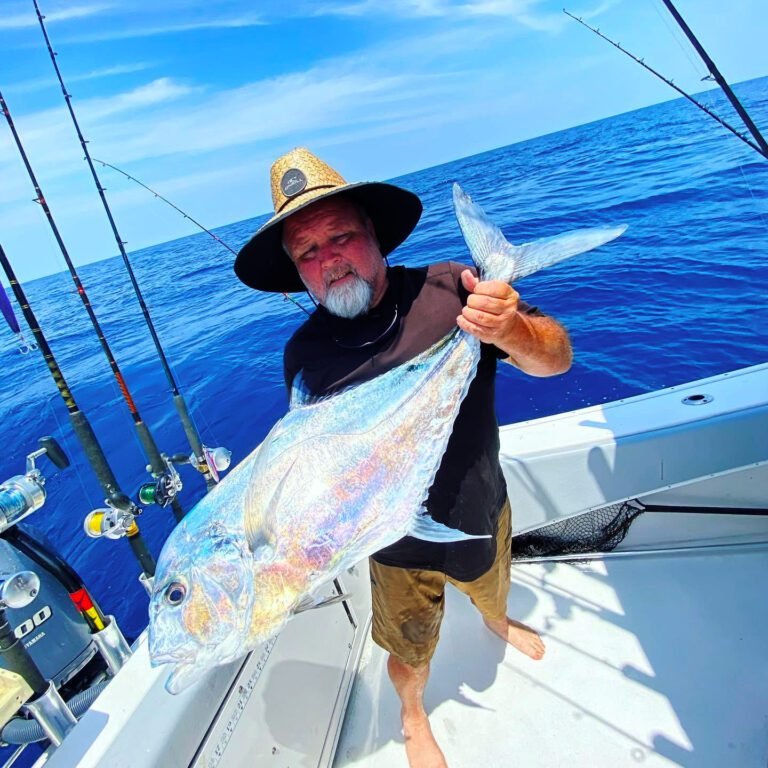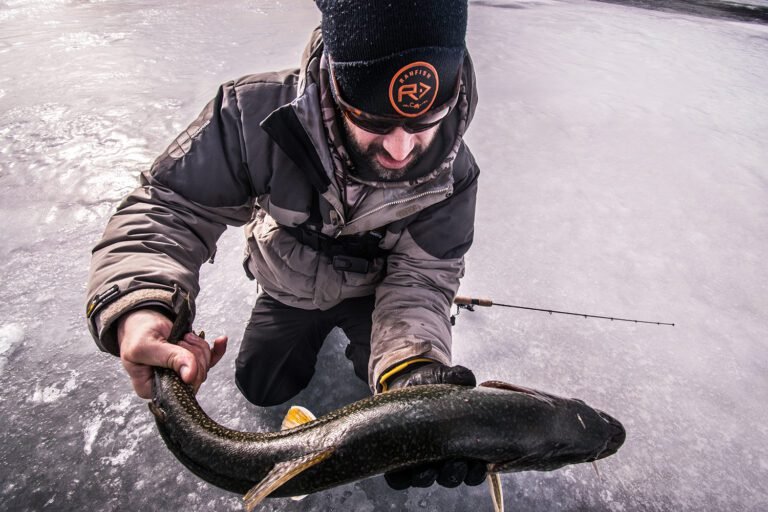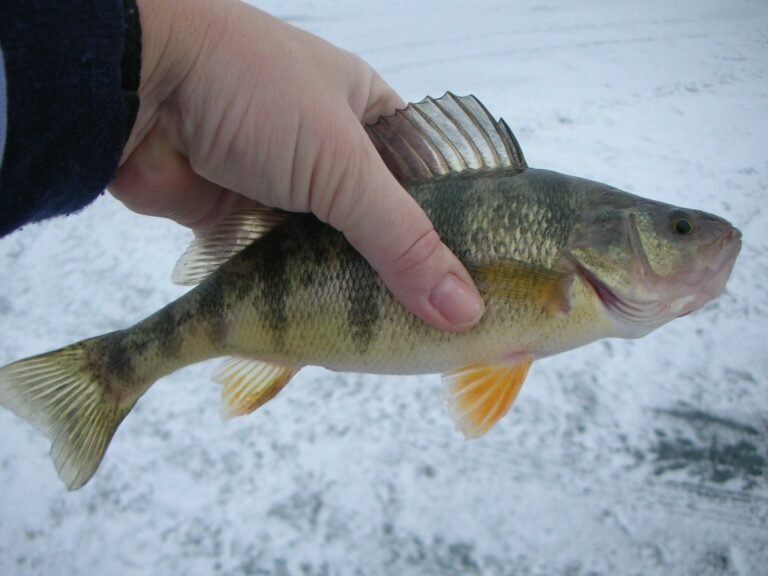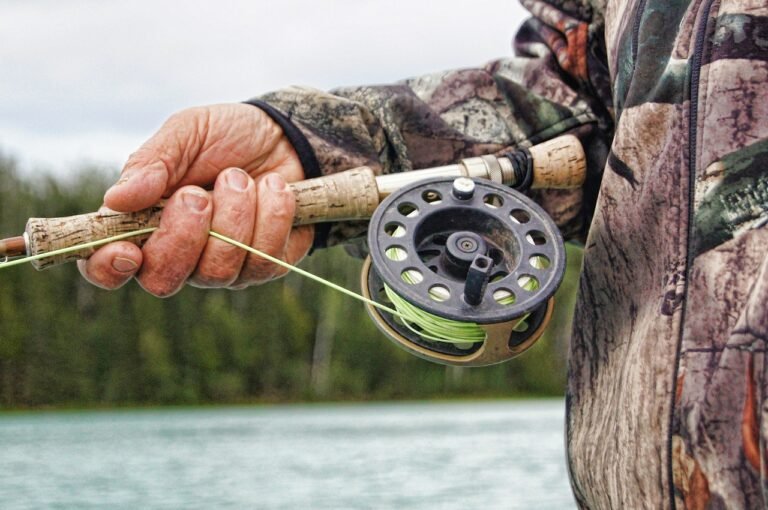When it comes to fish, the bass is definitely a favorite. Bass are versatile and can be enjoyed in many different ways. Spotted and largemouth bass are two of North America’s most popular game fish. They both are associates of the sunfish family and have many likenesses, but there are some essential differences between them.
This article will compare and contrast the two species in order to help anglers identify them when on the water. We will look at their physical characteristics, habitat, diet, behavior, and more. By understanding the distinctions between these two species, anglers can better understand how to target each one.
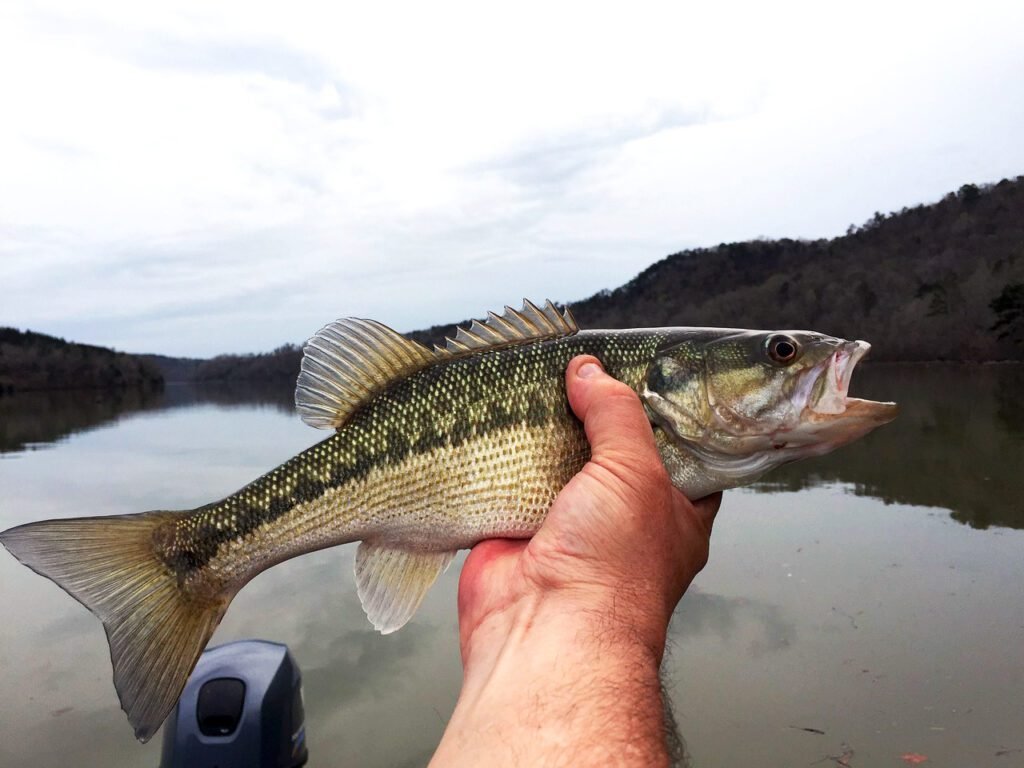
Difference Between Largemouth and Spotted Bass:
The difference between spotted vs. largemouth bass relies on the fish’s appearance, size, and behavior. Largemouth bass has a more smooth body and a larger mouth. It can grow up to 22 inches in length and weigh up to 10 pounds. On the other hand, the spotted bass is normally smaller. They do not grow more than 15 inches, and their weight rarely exceeds five pounds. They also have a more elongated body and a smaller mouth. The Spotted bass is aggressive, and they can attack larger prey. In comparison, largemouth bass prefers smaller prey because they are timid.
Appearance Between Spotted vs Largemouth Bass:
We will give details of each and everything between a spotted vs. largemouth bass so that you can identify them easily.
Jaw Length of Spotted vs Largemouth Bass:
The first thing you should consider is their jaws. The jaw length of spotted bass is generally shorter than that of largemouth bass. The average jaw length for spotted bass is about 2.5 inches (6 cm). They have a shorter lower jaw than largemouth bass, with their mouths extending just beyond the middle of the eye. Both of their jaws are pointed and are almost equal on top and bottom.
In comparison, The average jaw length for largemouth bass is about 3.5 inches (9 cm). Largemouth bass has a longer lower jaw that extends beyond the eye, and both of their jaws are rounded.
Dorsal Fin of Spotted vs Largemouth Bass:
Another thing you should notice is a dorsal fin. The dorsal fin of spotted bass is normally longer and more pointed. It is of a dark greenish-brown or black color with white edging along the top and is forked and can be found along the back of the fish.
In comparison, the dorsal fin of largemouth bass is naturally shorter and more rounded. It is triangular in shape, with a little concave posterior margin. The first ray of the fin is the most extended, and the number of soft rays can range from 10 to 12. It is located towards the midline of the fish’s back and can be used as a visible cue to differentiate between males and females of the species.
The tongue of Spotted vs Largemouth Bass:
If you have a bass fish in your hand and want to know which type of fish you have, just open its mouth and look at its tongue. Overall, while the tongues of spotted and largemouth bass are similar in some ways, there are also some notable differences between the two species.
The spotted bass tends to have smaller and has a rough patch in the middle of the tongue. In contrast, the largemouth bass has a smooth tongue. The tip of the tongue in a spotted bass is pointed and curved, while the tongue of a largemouth bass is more rounded and blunt.
Additionally, the teeth on the tongue of spotted bass are normally smaller and more considerable than those of largemouth bass. It lets the spotted bass to feed on smaller prey and helps it to catch and hold onto its food more effectively.
Cheek Scales of Spotted vs Largemouth Bass:
The spotted bass and the largemouth bass have quite different scales. The cheek scales of spotted bass are smaller and are arranged in a tight, overlapping pattern. At the same time, the scales on the cheek of largemouth bass are larger and more spaced out. The spotted bass has a dark lateral line that is usually broken, compared to the unbroken lateral line of the largemouth bass.
The cheek scales of a spotted bass are more uniformly colored, while the cheek scales of a largemouth bass may have more variation in color and pattern.
Habitat Between Spotted vs Largemouth Bass:
The habitat of spotted vs. largemouth bass can differ depending on the precise conditions of their environment and the availability of food and shelter.
Spotted Bass:
The spotted bass prefers clear, cool water habitats in larger rivers and reservoirs with rocky and gravelly bottoms. They are commonly found in areas with plenty of covers, such as submerged logs or vegetation, and are also found near submerged structures, such as bridges or damns.
The spotted bass is an adjustable fish and can tolerate a broad range of water conditions, from slow-moving streams to fast-flowing rivers. However, they are usually found in covered places and have an abundant food supply.
Largemouth Bass:
The largemouth bass is more adjustable than the spotted bass. They prefer warmer water than spotted bass. They are typically found in many habitats, including lakes, ponds, and slow-moving rivers and streams. They can also be found near aquatic vegetation and in brackish and saltwater habitats, such as estuaries and coastal bays.
Pro tip: Look for areas with a high food supply, such as areas with a large number of small fish, insects, or crustaceans. The largemouth bass is an opportunistic feeder and will often gather in areas where there is an abundant food supply.
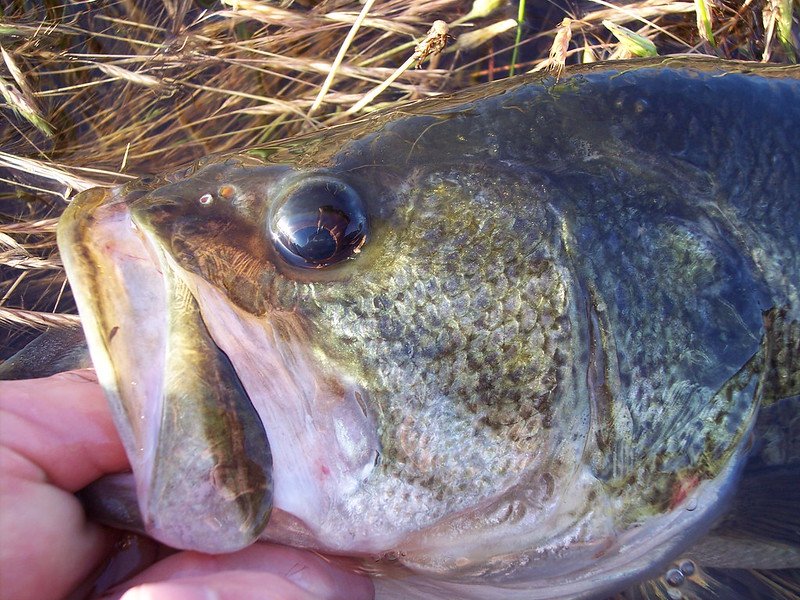
Behavior Between Spotted vs Largemouth Bass:
Now, let’s talk about the behavior of spotted vs. largemouth bass. Anglers who are familiar with the behavior of these species can use this knowledge to their advantage when fishing for this popular game fish.
Spotted Bass:
The spotted bass is known for its aggressive behavior because it can strike at a variety of baits, including live minnows, crankbaits, and jigs. The spotted bass is a vibrant and active fish, and it can be challenging to catch for anglers who are unfamiliar with its behavior.
When fishing for spotted bass, it is necessary to use the right techniques and equipment. The spotted bass is generally caught using live bait, such as worms and minnows, as well as artificial lures, such as spinnerbaits and plastic worms.
Anglers should also pay attention to the water conditions and the duration of the day, as spotted bass are known to be more active at certain times and in certain conditions. By comprehending the behavior of spotted bass, anglers can enhance their chances of success when fishing for this species.
RELATED:Have you chosen the best fishing reel? Here are some tips to choose a best fishing reel that you might find useful.
Largemouth Bass:
The largemouth bass is known for its sluggish and less active behavior compared to other species of bass, such as spotted bass. The largemouth bass is typically found in shallow waters, where they can ambush their prey. Live bait, such as worms and minnows, can be effective for catching largemouth bass.
They typically travel in a slow and leisurely manner, using their strong, muscular body to navigate through the water. They are also known for their capability to stay static for long periods, waiting for prey to come within range before striking.
Diet Between Spotted vs Largemouth Bass:
There are some differences in their diet that can be useful for anglers to know.
Spotted Bass:
The diet of spotted bass consists of small fish, aquatic insects, crustaceans, and other invertebrates, meaning they are carnivorous. They will typically feed on a variety of prey available in their environment. The spotted bass is also known to feed on frogs and other amphibians.
Overall, the diet of spotted bass varies and relies on the precise habitat and the availability of different types of prey. By comprehending the diet of spotted bass, anglers can better anticipate which baits and lures will be useful for catching this species.
Largemouth Bass:
The largemouth bass is primarily a predatory fish that primarily eats other animals. They are opportunistic feeders, which means they will eat whatever food is most readily available to them. Largemouth bass typically feeds on smaller fish, crustaceans, insects, and other aquatic animals.
They also feed on a type of plant matter, including aquatic plants, algae, and other vegetation. They often feed around the surface in the earlier morning and late evening and move to more bottomless water during the day. They also have been known to eat snakes and even small mammals that have fallen into the water.
FAQs:
do spotted bass taste good?
Spotted bass has a good and sweet flavor and is considered tasty. But like any fish, the taste depends on how it is cooked and what it is served with. Some people like to cook spotted bass so that it helps preserve its natural flavors, such as grilling and baking. Others prefer to cook the fish with herbs, spices, or citrus to add extra flavor. Ultimately, whether or not spotted bass tastes good is a matter of personal choice.
what is the best bass to eat?
There are many types of bass that are wonderful to eat, but it depends on your personal taste. Some of the most commonly eaten types of bass contain largemouth bass, smallmouth bass, and striped bass. These fish are typically considered mouthwatering and a popular choice among fishermen and seafood lovers.
Conclusion:
In conclusion, spotted and largemouth are two famous species of bass that fishermen usually pursue. While both are identical in many ways, there are some key differences between the two species.
The largemouth bass is naturally larger and has a distinct dark stripe running along its sides, while spotted bass is typically smaller and have dark spots on their bodies. Both species are popular for their taste and can be found in different habitats, but largemouth bass is generally more widely spread and is more commonly caught by fishermen.



